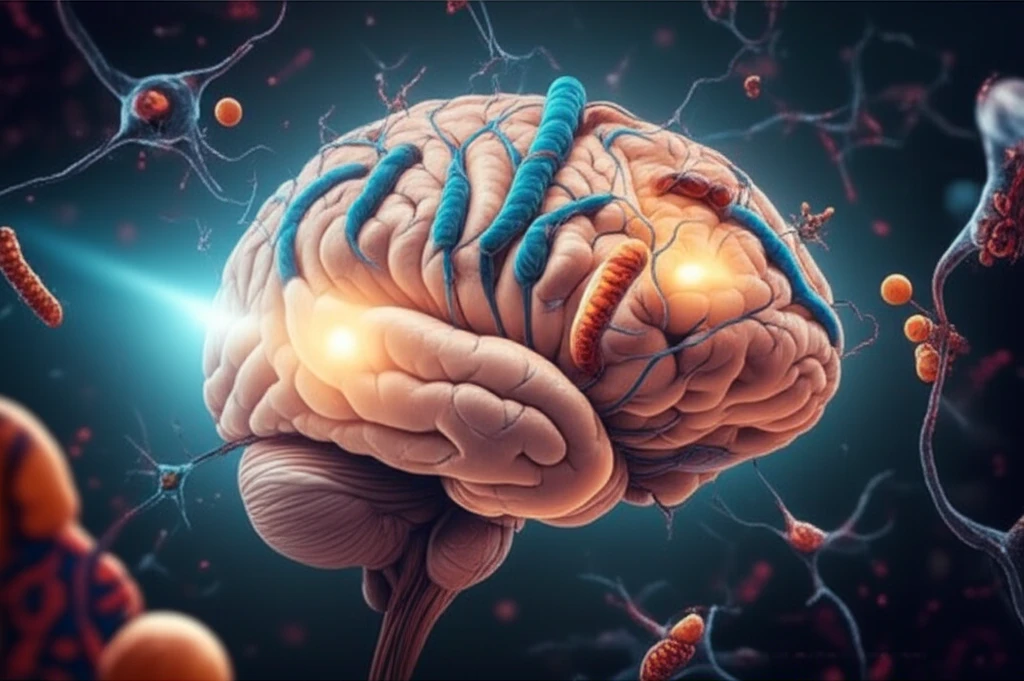
Unlocking the Mysteries of Parkinson's: From Cellular Chaos to Potential Therapies
"A deep dive into the complex mechanisms driving Parkinson's disease and the promising strategies for managing this challenging condition."
Parkinson's disease (PD) is the second most prevalent neurodegenerative disorder, impacting a significant portion of the aging population. It's characterized by motor deficits stemming from the loss of dopaminergic neurons in the substantia nigra pars compacta (SNpc). This loss leads to a cascade of problems, disrupting movement and overall neurological function.
While the loss of dopamine is a hallmark of PD, the disease's complexity extends far beyond a single neurotransmitter deficiency. Accumulation of alpha-synuclein, mitochondrial dysfunction, oxidative stress, excitotoxicity, and neuroinflammation all play critical roles in the development and progression of PD. These factors interact in intricate ways, contributing to the neurodegeneration that defines the disease.
This article will delve into the multifaceted nature of Parkinson's disease, exploring the key pathological mechanisms that contribute to its development. We'll examine the role of alpha-synuclein, the impact of mitochondrial dysfunction, the effects of neuroinflammation, and other critical factors. Finally, we'll discuss promising therapeutic strategies that aim to address these underlying mechanisms and offer hope for improved management of PD.
The Prime Suspect: Alpha-Synuclein and Its Role in Parkinson's

Alpha-synuclein has emerged as a central figure in the Parkinson's disease story. Normally, this protein plays important roles in the brain, but when it misfolds and aggregates, it becomes a major problem. The SNCA gene provides the instructions for making alpha-synuclein, and mutations or duplications in this gene are linked to familial forms of PD. These genetic changes lead to an overproduction of the protein, increasing the likelihood of aggregation.
- Disrupts Vesicle Fusion: Interferes with the release of neurotransmitters.
- Inhibits Lysosomal Degradation: Prevents the breakdown of damaged proteins.
- Alters Gene Expression: Negatively regulates the transcription of key genes.
- Increases Oxidative Stress: Triggers the production of harmful reactive oxygen species (ROS).
Toward a Brighter Future: Therapeutic Strategies for Parkinson's
While current treatments for Parkinson's disease primarily focus on managing symptoms, there's a growing effort to develop therapies that address the underlying pathological mechanisms. These strategies aim to slow down or prevent the neurodegeneration that drives the disease.
Researchers are exploring various approaches to target key factors involved in PD:
<ul> <li><b>Targeting Alpha-Synuclein:</b> Therapies aimed at reducing alpha-synuclein aggregation and promoting its clearance are under development.</li><li><b>Enhancing Mitochondrial Function:</b> Strategies to improve mitochondrial health and reduce oxidative stress are being investigated.</li><li><b>Modulating Neuroinflammation:</b> Approaches to dampen the inflammatory response in the brain are showing promise.</li> <li><b>Restoring Dopamine Levels:</b> Pramipexole can ease PD symptoms by stimulating D2 receptor and can improve the state of patient's depression.</li> <li><b>Cannabinoids, Selegiline and Rosagiline:</b> Production and release of cytotoxic molecules can be reduced by cannabinoids. Selegiline and rosagiline can be used as monotherapy or adjuvant therapy to levodopa in Parkinson's disease (PD).</li></ul> These are just a few examples of the many therapeutic avenues being explored. As we continue to unravel the complexities of Parkinson's disease, we move closer to developing effective treatments that can improve the lives of those affected by this challenging condition.
